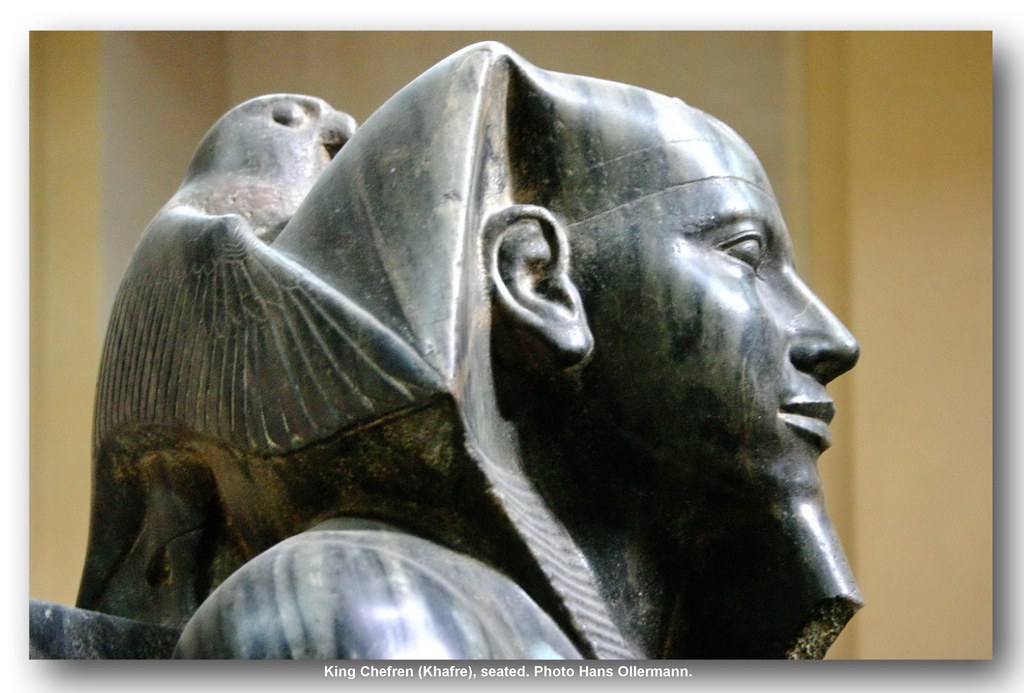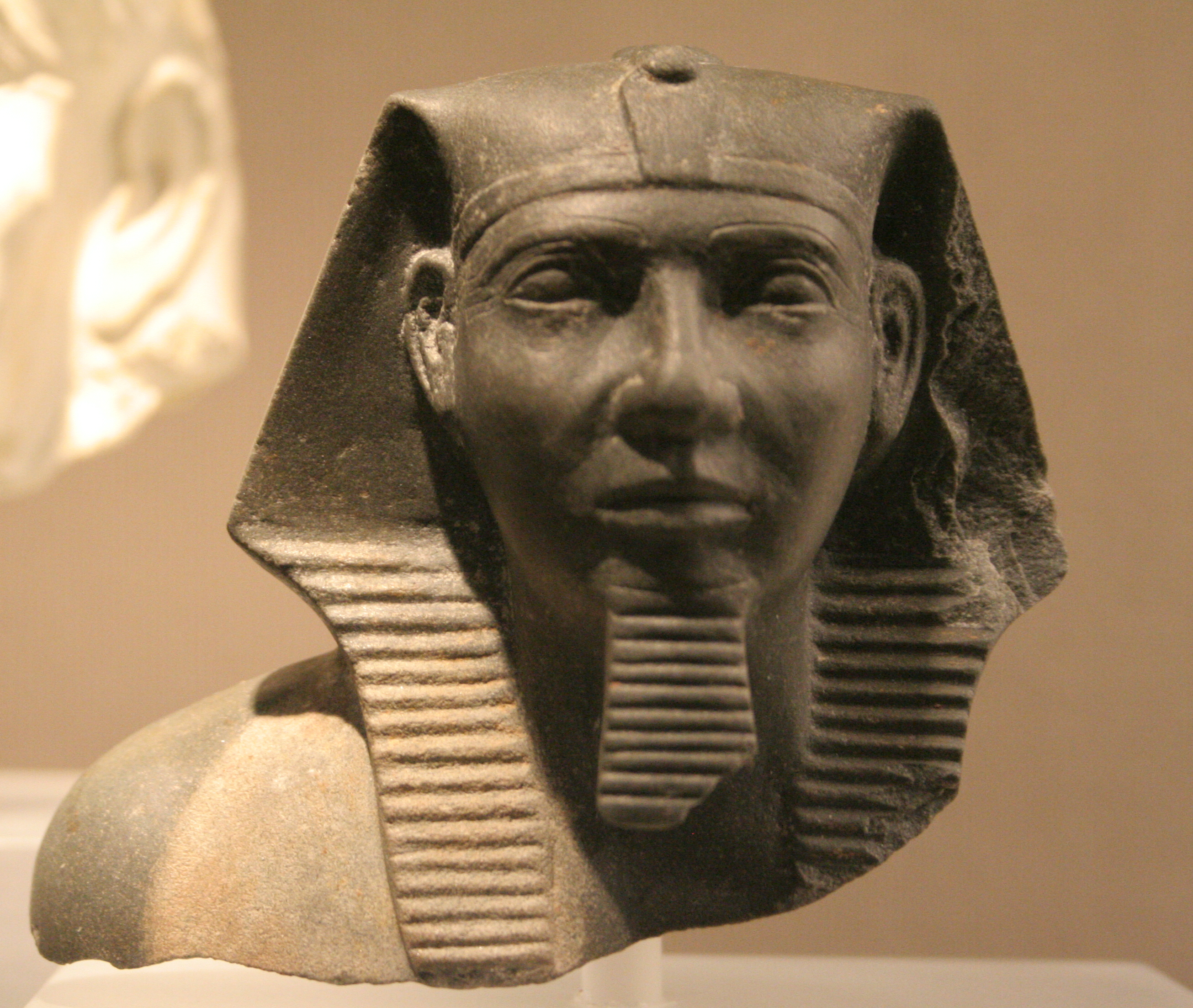Having thought it over, it has been decided to extend the series a bit simply because there is too much information to exclude here. Besides, we haven't even begun to discuss Khafre and Menkaure yet, the former of whom shall be discussed in this entry. Khafre, to start, was the son of Khufu and Henutsen. He reigned approximately for a total of 26 years however Egyptologists do not agree when he reigned and yes, it is he who is credited with the construction of the Sphinx. This entry will focus not only on the Sphinx and his mortuary complex but his life and the thread he wove in the fabric of the IV dynasty.
Unfortunately, little of the life of Khafre is know with the exception of his tomb located on
the Giza plateau. Khafre, whose name means Appearing Like Re, married his sister called Khamerernebty, which was not uncommon in Ancient Egypt and explains for the genetic diseases and disorders that were prevalent not just in the IVth dynasty but through the whole of Ancient Egyptian history. His pyramid, as mentioned is on the Giza plateau, but not of equal or greater size. According to Ian Shaw of the University of Liverpool, the plans and measurements of the pyramid differed from that of Khufu (Shaw, 2000). His pyramid is the second largest standing at a height of 143.5 m (470 ft) however because the pyramid rests on higher ground it looks taller than the Great Pyramid of Khufu. One defining thing concerning the pyramid is that it is constructed of granite. What is the reason for this though? The answer lies in the Ancient Egyptian economy.
| Sphinx pyramid of Khafre courtesy of egyptphoto.ncf.ca |
A bit about the Ancient Egyptian economy must be mentioned here because it affected the
pyramid building in the IV dynasty profoundly. It required the government to reposition its labour force away from agriculture and farming to construct the pyramids. One can imagine, Ian Shaw states, the pressure applied on the resources throughout Egypt in order to construct only one pyramid on the Giza plateau. What strained the economy as well was that the agricultural techniques did not change during this time whilst labour force on the pyramid itself increased thereby putting a strain on the economy and government. This of course is no different with other pyramids like Khufu's and later with Menkaure as well which also strained the economy (Shaw, 2000). Dominic Perry, of the Ancient Egyptian Podcast correctly assumes that the massive task of building such elaborate tombs not led to the depletion of its resources but the fall of the Old Kingdom as well amongst other things (Perry, 2013). We will touch upon this in later entries however.
 |
| Khafre protected by Horus in diorite courtesy of Hans Ollerman |
 |
| Bust of Khafre courtsey of the Ägyptisches Museum in Berlin |
The most interesting piece of his entire funerary complex must be the giant Sphinx that guards the pyramid daily. Again, Ian Shaw calculates that the Great Sphinx is 72 m (236.22 ft) which seems to be roughly half the height of Khafre's pyramid itself (Shaw, 2000). But why would Khafre decide to construct a great sphinx in front of his pyramid? Egyptologist, Toby Wilkinson, may have the answer. In his book, the Rise and Fall of Ancient Egypt, he says that the Great Sphinx means nothing less than the union between the pharaoh and the son god, Re (Wilkinson, 2010). This of course makes sense because the pharaohs have been attempting godship for a couple of centuries so Khafre equating himself to the son god like this makes perfect sense. The first pharaoh of the IV dynasty even called himself, Neb-ma'at, which means Lord of Truth or Order.
To conclude, it is rather unfortunate that we have so little information on the actual life of Khafre except that he married his sister, Khamerernebty and he build the second largest pyramid on the complex behind the pyramid of Khufu. The resources used were extraordinary as each king sought to use outdo the other on a grand scale. Actually in the next entry, we shall see that Menkaure built his pyramid with granite because of the depletion of resources by his predecessors. The most compelling thing however is the construction of his Great Sphinx which he build before his pyramid and is connected by a causeway. All together this massive funerary complex is not only memorable but the Sphinx itself is most recognisable on the Giza plateau apart from the Great Pyramid which seems to supercede the rest of the plateau.
References
Perry, Dominic. 2013. Ancient Egyptian History Podcast. https://c2.staticflickr.com/8/7304/10695668256_74e33a581e_b.jpg
Shaw, Ian. 2000. The Oxford History of Ancient Egypt.
Wilkinson, Toby. 2010. The Rise and Fall of Ancient Egypt
No comments:
Post a Comment